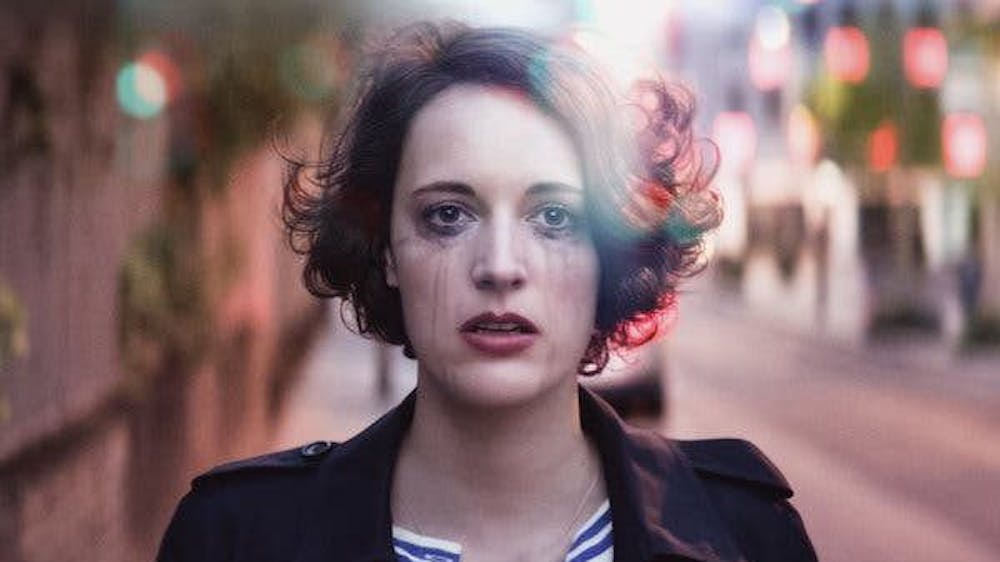Phoebe Waller-Bridge is an English actress and writer that created, writes and stars in BBC’s series “Fleabag.” “Fleabag” is television show that follows a confused and witty young woman as she navigates her traumatically complicated life. “Fleabag,” which was originally a one-woman play performed at the Soho Theater in London, has become a crossover hit with both British and American audiences. Fleabag breaks the fourth wall, which means she looks directly into the camera and addresses the audience. A creative device used in numerous works from “Hamlet” to “Ferris Bueller’s Day Off,” Fleabag’s usage of breaking the fourth wall brings depth and understanding to a character that often feels quite misunderstood.
It feels necessary to review “Fleabag” in two parts. This is not because the two seasons are not interwoven rather seamlessly - because they are - but because the fundamental tone of each season is drastically different. It’s sort of like the five stages of grief: denial, anger, bargaining, depression and acceptance. Season one is denial, anger and depression. Season two is still lots of depression but also bargaining and (somewhat) acceptance. Waller-Bridge really takes the audience along on Fleabag’s journey.
Season One:
Each consecutive episode of season one unravels more and more of Fleabag’s nature. She is trying to wade her way through life’s trauma’s, which include the death of someone close to her, the death of her mother, her inability to find stable love, her complex relationship with her sister, her sister’s cringe-cruel husband, her distant father and his new wife who is also her godmother. Fleabag is defined by her name, Fleabag. No one ever calls her Fleabag, but that’s who she is. This is a compelling quirk of the show. Some characters are given “normal” names, such as Fleabag’s sister Claire or her ex-boyfriend Harry, yet some are born from a defining feature of their character - such as Bus Rodent or Hot Misogynist. Slowly but surely you begin to understand Fleabag’s brain. Every time she turns to the audience, breaking the fourth wall to share a joke or say something charmingly controversial, you learn why she is Fleabag. Each actor brings their respective character - that used to live inside the stories on a one-woman monologue - to life. Full of complexity, dark humor and bizarre interpersonal dynamics.
Season Two:
Following a twist that left off the end of season one with shock (I won’t give it away), season two almost feels like a new television show. With the introduction of the character “Hot Priest,” “Fleabag” takes a turn. Hot Priest, played by Andrew Scott, is a character that has become somewhat a phenomenon and is currently the topic of countless internet posts. The shocking difference between him and every other character is that Hot Priest can notice when Fleabag talks to the camera. He yells out, with frantic confusion, asking her who she’s talking to. What was a creative device becomes an integral part of the character of Fleabag. It is the division between her relationship with reality and her relationship with the audience. Fleabag has to navigate a new challenge, being seen and being understood.
I was at a friend’s house the other day and picked up book off their shelf called “Finding Meaning: The Sixth Stage of Grief” by David Kessler. Fleabag reaches that sixth stage of grief as she finds meaning in the end of the season. That bittersweet nature of her discovery is what makes the show so difficult to watch.
“Fleabag” is streaming now - check it out if you have a chance. According to Waller-Bridge, there won’t be another season of “Fleabag.” She’s busy creating new television shows and co-writing the screenplay for the 25th “James Bond” film, set to release in 2020.
But, that’s also what she said after season one. I have a feeling there’s more to the story.














